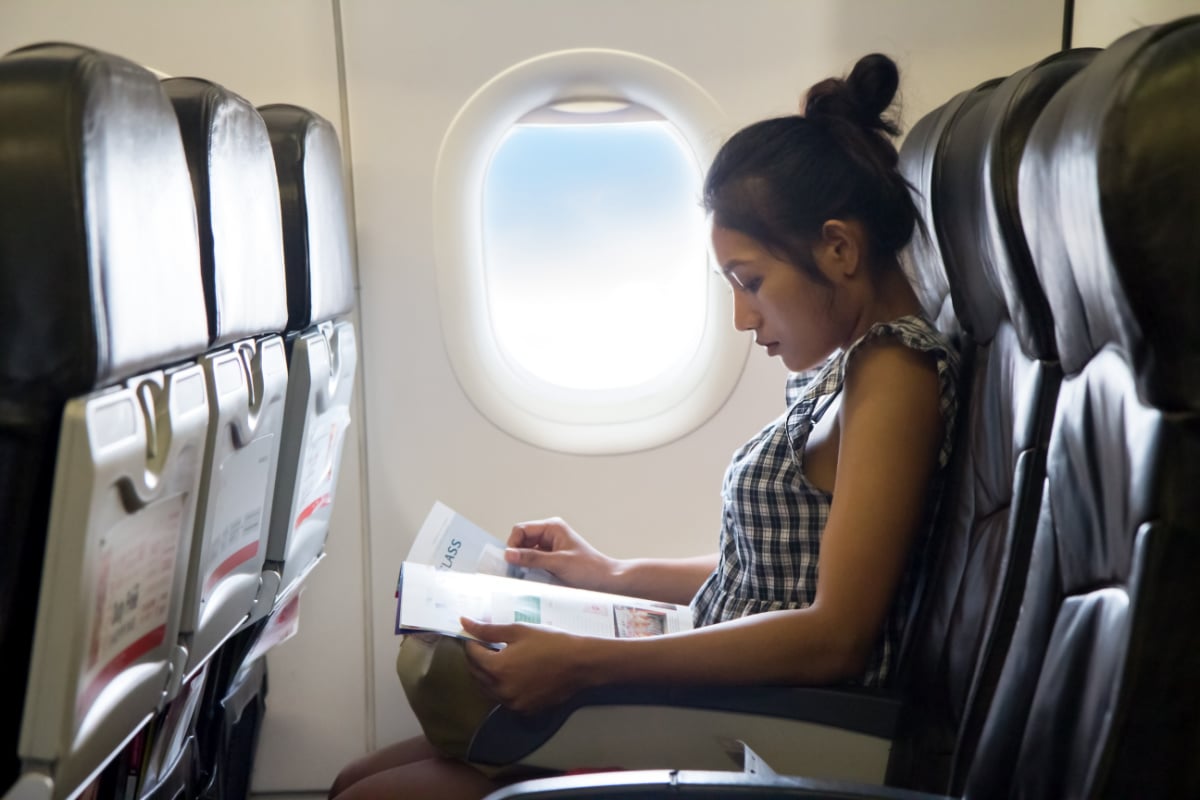
Why Travelers Can Expect More Turbulence On Future Flights
Last Updated
Turbulence: the leading cause of spilled ginger ale and awkward armrest grabs for travelers everywhere.
We all know that sudden stomach-dropping panic when your plane starts getting tossed around like a rag doll. It can feel absolutely terrifying.

The good news: Turbulence is mostly all bark and no bite. While the stress can be high, the risk of injury to passengers is low. Travelers can also easily prevent the most serious problems.
The bad news: Turbulence is increasing and will only get worse from here.
What is Turbulence?
Turbulence is a weather phenomenon that causes a plane to shake, jolt, or move in an irregular way.
Different types of turbulence are caused by wind from mountains and irregular terrain, by warm weather unevenly heating the Earth’s surface, and by the friction of cold and warm fronts.
Clear air turbulence is a specific type of turbulence caused by changes in the direction of air streams or invisible rivers of air moving a few miles above the Earth’s surface. This effect is known as wind shear.
Clear air turbulence happens in cloudless clear skies at higher altitudes. Since there are no visible warning signs, it’s the leading cause of unexpected rough skies and roller coaster rides for passengers.

Why Are Flights Getting Bumpier?
There has been a 15% increase in clear air turbulence over the past few decades, according to Dr. Paul Williams, a professor of atmospheric science at the University of Reading.
“At higher altitudes where planes fly, climate change is altering temperature patterns, which creates more wind shear,” he recently told the Wall Street Journal. Other studies confirm that warmer global temperatures in Earth’s upper atmosphere are creating serious wind shear problems at mid-latitudes.
In other words, the air where planes fly is getting warmer, changing the path of jet streams and creating more of the invisible wind shear that can really toss a plane around.
Dr. Williams’ meteorological model predicts that clear air turbulence in the mid-Northern Hemisphere will more than double over the next few decades.
This means popular international US routes like New York to Europe and California to Asia (which mostly fly through the high altitude mid-Northern Hemisphere) can expect bumpier rides.
Top 5 Travel Insurance Plans For 2023 Starting At $10 Per Week
Top 5 Travel Insurance Plans For 2023 Starting At $10 Per Week

Travelers Shouldn’t Worry
While clear air turbulence can knock your airplane up or down rather suddenly, it will likely end as quickly as it started.
This type of turbulence doesn’t usually last for more than a few thousand feet. Your pilot can maneuver the plane up or down just a bit to get away from the rough skies.
While severe turbulence is on the rise, it’s still nowhere near common. The risk of serious turbulence on a flight is just a few tenths of a percent. Passengers are more likely to experience moderate (1%) or light turbulence (3%).

Injuries from severe turbulence are also incredibly rare.
On average, less than three passengers per year have been seriously injured by turbulence since 2009, according to the National Transportation Safety Board. (Most of the minimal number of these injuries are sustained by unrestrained flight crew.)
All things considered, travelers are actually much more likely to be upgraded to first-class than to be significantly affected by turbulence.
Turbulence detection tools are constantly improving to help pilots predict the unpredictable. For example, United and American Airlines now use a program called SkyPath, which detects vibrations from pilots’ iPads and reports them to other planes nearby in real-time.

How To Prepare For Turbulence
There are plenty of steps travelers can take to easily prepare for turbulence and prevent any serious impact.
- Book flights for earlier in the day with seats towards the front of the plane, 21-year flight attendant and Cruising Altitude author Heather Poole recently advised National Geographic.
- Wear your seatbelt, and not just when the fasten seatbelt sign is on. This applies to adults and children. While airlines don’t require small children to have their own seat, the FAA recommends using a child safety seat for children under 2. This way, everyone will avoid hitting their head on the overhead bins or knocking into the tray table in front of them.

- Keep small items tucked away. Make sure cell phones, water bottles, and other small items that could turn into projectiles are tied down or put away.
- Learn more about the sky. The trickiest parts of turbulence are surprise and helplessness. Travelers can feel more comfortable experiencing turbulence when they know where it’s coming from and remember the strong likelihood that they’ll be just fine.
- Don’t panic. While turbulence can feel scary, it’s more likely to rattle your mind than hurt your body. Screaming, ringing the call button, passing babies across the aisle, or trying to grab your belongings will only make the situation worse. Stay calm and wait for the rough patch to pass.
Traveler Alert: Don’t Forget Travel Insurance For Your Next Trip!
↓ Join Our Community ↓
The Travel Off Path Community FB group has all the latest reopening news, conversations, and Q&A’s happening daily!

SUBSCRIBE TO OUR LATEST POSTS
Enter your email address to subscribe to Travel Off Path’s latest breaking travel news, straight to your inbox.
This article originally appeared on TravelOffPath.com

